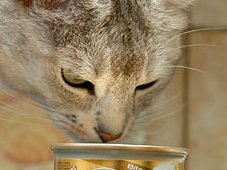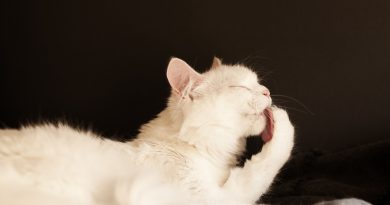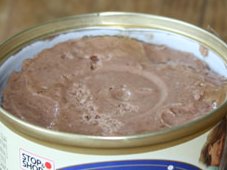Is Your Cat Diner Up to Code?

Restaurant owners and managers are well schooled in the strict safety codes that their kitchens must follow. To ensure that eateries adhere to these codes, many health departments require that restaurant employees take a city-sponsored food safety class. According to Vincent Delisi, who supervises restaurant inspectors in Austin, Texas, those classes offer information having to do with food handling and storage, as well as hygiene. When it comes to keeping human restaurants up to speed, "Education is critical," says Delisi. Here, with Delisi’s input, we’ve designed a restaurant safety class for your furry friend’s favorite cafe – your kitchen!
Lesson #1: Food Storage
"Food needs to be stored at the appropriate temperature, depending on what kind of food it is," says Delisi. Dry cat food should be kept in a cool, dry place off of the floor in an airtight container. Check the expiration date on the bag and make sure you throw away any kibble that is left past that date. Wet food should not be left out in its can. Instead, empty remaining food into an airtight container and refrigerate. The same expiration date rules apply.
Lesson #2: Food Handling
Just as restaurant chefs and servers must wash their hands regularly during work, you should also clean your hands before feeding your cat. Though cat food never directly touches your paws, the scoop you drop back in the dry food container, or the spoon you use to dish out the wet food, does. Scrubbed hands will ensure that whatever bacteria you’ve brought home won’t be passed on to your pet.
Lesson #3: Dishware
Plastic can scratch, crack and hold on to bacteria, each of which can make eating uncomfortable for your cat, whose chin, mouth and tongue may be cut and infected by these scratches. Ceramic dishes are fine for slow eaters, while stainless steel (with a rubber underside that prevents slipping) is safer for exuberant eaters. No matter the material, your cat’s food and water dish should be cleaned each and every day with hot water and soap. This is primarily to wash away food particles caught in dish corners, which can attract bacteria and make your pet sick – a hefty fine for any cat eatery.
Lesson #4: Walls and Floors
"We get lots of complaints about floors and walls," notes Delisi. Could your cat speak in words, it might be voicing the same gripes. The sights and especially the smells emanating from the lower portion of the walls and the floor near your cat’s eating area may be unappetizing, especially if your cat is a messy eater, since its food may create a crust in both areas if left unchecked.
Because some cats remove their food from their dish and eat it on the floor, it’s important that any cleaning products you use in this area be non-toxic. Soap and hot water will do the trick. If smells persist, diluted vinegar is a safe and effective cleanser. Store paper towels and a spray bottle filled with soapy water nearby to make clean-up a quick and easy daily process.
Lesson #5: Location, Location, Location
You wouldn’t eat at a restaurant where the toilet was next to your table and neither should your cat. Fluffy’s eating area should not be anywhere near her litter box. Placing them in close proximity may mean that your cat refuses to use either area properly.
Your cat’s eatery should also be in a quiet place, where it can easily see who’s entering the room and what’s going on in the vicinity. This will allow your cat to eat without anxiety (which can cause stomach upset), knowing that it can detect any incoming dangers.
Congratulations! You’re now a certified Cat Food Safety expert – and your cat will eat better for it.













